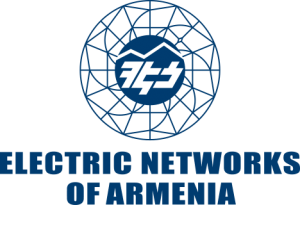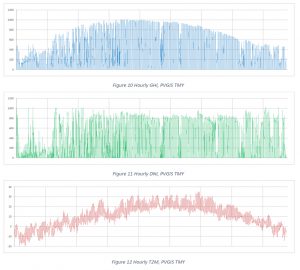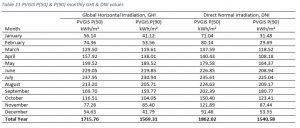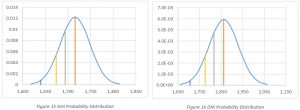Assistance within financing or co-financing processes
Introduction
One of our key expertise is providing technical assistance and advisory services to organizations through the complete course of applying, receiving and managing financial support (loans, investments, etc.) by international financial institutions (IFIs).
We have hands on experience in preparation of bankable documents for energy projects not only in solar PV project development but also rehabilitation of electric networks infrastructures. Heavy industries such as mining is also another area of expertise, therefore, considering our scope of expertise in different industries enables us to propose technical assistance to financing/co-financing process with IFIs.
Previous experience
Our first ‘large-scale’ experience has been with Electric Networks of Armenia (ENA) CJSC where our team of experts (as part of the project team at Management Mix LLC) provided technical assistance to ENA in the process of obtaining a multi-million USD loan from the Asian Development Bank (ADB), International Finance Corporation (IFC) and European Bank for Reconstruction and Development (EBRD) for rehabilitation of the electric networks infrastructures.
Our interventions have been in terms of implementation and reporting on environmental, health & safety action/mitigation plan(s) along with assistance to ENA in Environmental & Social Impact Assessment (ESIA).

Bankable documents for solar PV projects
Commercial & utility-scale solar PV plants are growing rapidly all around the World. Considering the scales of capital investments most developers apply for financing/co-financing scheme at any time of their investment.
In-line to this rapid growth of SPVs there are dozens of financing/co-financing schemes which propose #GREENENERGYLOANs. Even though the long list of documents required by the financing party might look hectic in the first glance, but trust me those will SAFEGUARD you investment in case you take them seriously and be transparent & frank to yourself and the financing party.
Based on our experience with the German KfW Development Bank in addition to the ownership documents, permits, certificates and technical design documents, solar PV developers are required to submit the following as part of their dossier:
- Environmental & Social Impact Assessment
- Solar Resource Assessment
- Energy Yield Assessment
- Design Basis Report
- O&M manuals and action plans
- QHSE manuals and action plans.

Solar Resource Assessment
Solar Resource & Energy Yield Assessment is an integral & essential part of every solar PV system development. This is a critical stage of a commercial solar PV plant design & development as it has a direct impact on not only the technical design and site planning but also financial performance assessment and decision making.
Solar resource assessment (SRA) is the characterization of solar irradiance available for energy conversion for a region or specific location over a historical time period of interest.
Since July 2021 we have conducted Solar Resource Assessment (SRA) and Energy Yield Assessment for 23 commercial SPV plants (112 MWp cumulative capacity) in Armenia which have applied for financing under German-Armenian Renewable Energy Fund (GAF-RE) phases IV and V.
We use a long-term satellite-derived meteorological data in order to generate a solar resource profile which is then adapted to on-site measurements of the solar resource, if any.
Solar radiation changes year by year, as it is determined by weather cycles and stochastic factors, inter-annual variability and uncertainty of the solar resource data is calculated. The output of the SRA is the monthly GHI, DHI & DNI values for the project site with P50, P75 & P90 probability distributions.
The SRA report includes all those data (uncertainties of the meteo-data, inter-annual variability, etc.) required for developing an Energy Yield model and assessment over the lifetime of the PV project.



Energy Yield Assessment
Energy Yield Assessment is also an essential part of every solar PV system development and is the basis for technical and financial feasibility study.
A comprehensive model of the solar PV plant is developed, including the objects in the vicinity, which might interact with the PV system. The annual and lifetime energy yield is simulated and analyzed considering the solar resource assessed in the previous stage, the constraints and assumptions defined in the model.
As a rule of thumb, the financing parties request the EYA report with 50 and 90 percent of probabilities. Therefore, the annual and lifetime – considering performance degradation – energy yields are estimated with P50 and P90 precisions.
OUTCOMES:
1.Energy Yield Assessment (SRA) Report
2.Losses, performance ratio, P50 and P90 energy yield, lifetime power production
3.Recommendations on solar PV arrays layout and the topology



Design Basis Report
The Design Basis Report (DBR) documents the major design criteria and includes recommended project elements, planning level drawings, preliminary schedules, and even cost estimates.
The design basis report for a solar PV project justifies the rationale behind selection of PV arrays topology, type and number of PV modules, solar inverters, elements of the AC & DC circuits, elements of the switchgear, foundations & mounting structures, security & surveillance systems.
It is highly advised that you request a design basis report from the author at planning and design phase. This will make the decision making way easier